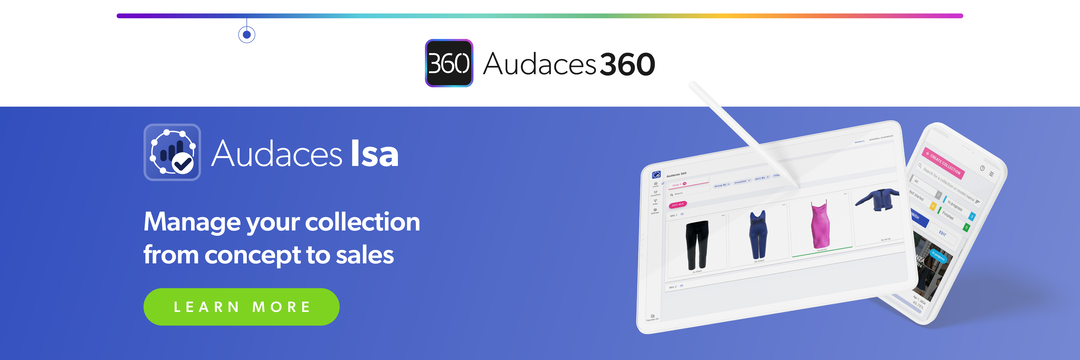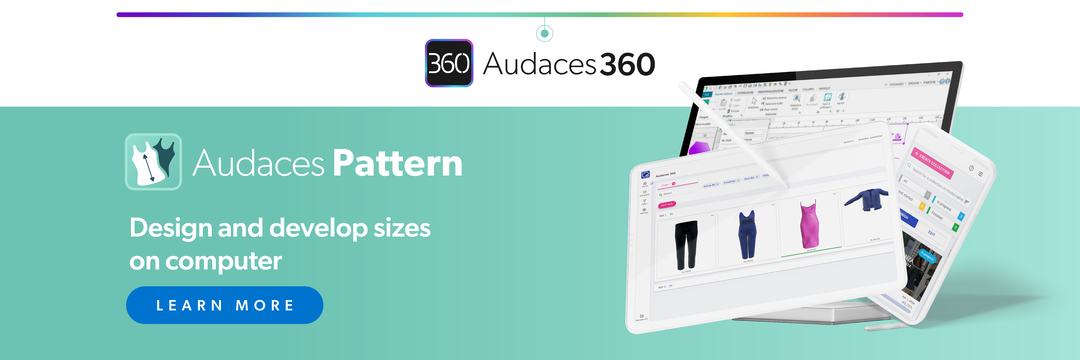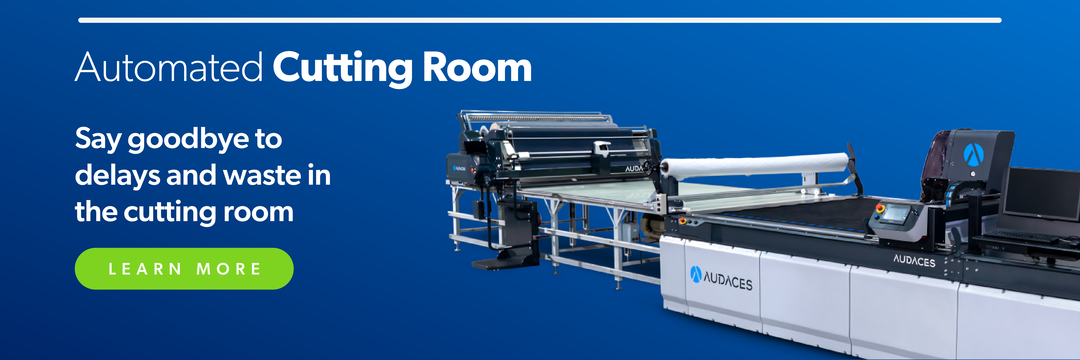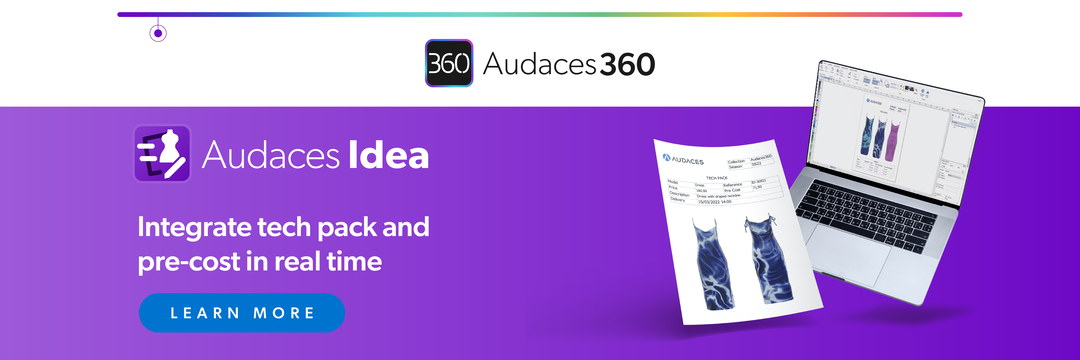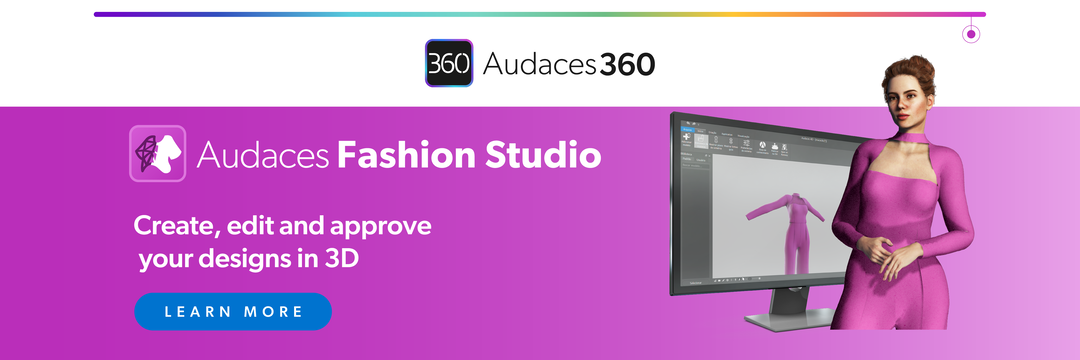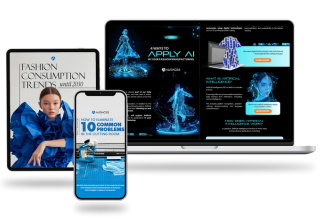Summary
- Designing tailored clothes has always been a craft of precision and passion. In the past, it was knowledge passed down from generation to generation.
- Now, with digital tools, it’s easier than ever to bring ideas to life. You don’t need to leave behind the tradition; you can simply enhance it.
- Experience the future of the fashion industry with Audaces360. Start your free trial today!
Digital design opens new doors for creativity, accuracy, and productivity. And learning how to make the most of it can truly change the way you work.
In this text, we’ll guide you through five simple steps to design tailored clothes digitally. Each step is easy to follow, whether you are new to digital tools or already have some experience.
From the first idea to the final touches, we’ll show you how digital design can support every part of your process. Get ready to discover how to create the best quality tailored clothes!
Happy reading.
Sumário
What are tailored clothes?
Tailored clothes are garments made to fit someone perfectly. Unlike ready-to-wear clothes, which are mass-produced in standard sizes, tailored clothes are custom-made to suit the person’s body shape.
The process usually starts with a fitting to take measurements and understand the customer’s preferences. The professional then starts to create a garment that complements the person’s unique features.
Attention to detail in the construction is what sets these garments apart. Tailors carefully select fabrics, stitch seams with precision, and ensure the overall finish is flawless. This makes tailored clothes a favorite for special occasions or everyday wear that requires extra comfort.
While people often associate them with luxury, this kind of clothing offers long-term value. The quality of the materials and the craftsmanship ensure that they last longer.
Learn more: Why invest in the quiet luxury trend to create a collection?
How to design tailored clothes digitally?
By using software tools, you can create garments that fit perfectly, explore different styles, and make changes quickly.
This process allows designers to achieve a high level of detail while maintaining the special touch that these clothes are famous for.
Here are five key steps to designing tailored clothes digitally:
1) Choose the right software
The first step is selecting the right software for the job. Look for programs that are specific to fashion design. These tools offer features like flat sketching, 3D visualization, and fabric simulation.
Choose one that fits your needs and skills. Once you’ve chosen it, familiarize yourself with its tools and interface. Take time to explore the features it offers. Learn how to create designs, adjust measurements, and apply different fabric textures.
A good tip is going for software that integrates well with other fashion solutions. This will help you move seamlessly from 3D simulation to pattern making and final adjustments, for example. Also, make sure it’s easy to export your designs for production or collaboration with other teams.
The right choice will make your design process smoother and more effective. It will save you time and help you create tailored clothes with precision.
Learn more: What is the best 3D clothing design software to invest in?
2) Define colors and materials
Start by choosing the fabrics and colors you want for your garment. Digital design software often has a library of fabric textures and color palettes to help you make these decisions.
Once you’re already, apply them to your design. This will give you a visual representation of how the final product will look. Experiment with different color combinations and fabric types to find the best look for your garment.
Remember that the right materials can affect the garment’s fit and style. Some fabrics drape differently than others, and certain colors can highlight or downplay different design features.
Also, make sure your digital representation reflects the feel and look you want for the final garment.
3) Create the initial design

Use simple lines and outlines to create the overall structure. This is where you’ll decide on key features like sleeves, collars, and hems.
Once the basic structure is in place, refine the design. Add details like stitching, pleats, or pockets. These elements give the garment character and style.
Digital tools also allow you to easily make changes as you go. If you decide to adjust the neckline or sleeve length, it’s simple to modify your design without having to start over.
4) Simulate the garments in 3D
After creating your design, simulate it in 3D to see how it will look in real life. 3D simulation gives you a better understanding of how the garment fits and moves. You can see how it drapes and fits in the digital model, which helps catch any issues before prototyping.
This step also lets you test different fabrics and materials. You can instantly see how different textures and colors will affect the overall design. It’s a quick way to visualize your choices without needing to make a physical sample.
Learn more: Discover 5 major benefits of 3D simulation for fashion
5) Adjust, if necessary
Now your design is ready, look for areas where the fit may be off, or the design doesn’t look quite right. You can make changes quickly and see the results immediately.
Adjust the fit, proportions, or details. This is the magic of digital design: it allows you to fine-tune your work until it’s exactly how you want it.
It can include resizing patterns, altering fabric textures, or tweaking the overall shape of the garment.
Eager to begin crafting your 3D designs immediately? Find out how to dive in with our unique resources. Free download available now!
Benefits of designing tailored clothes digitally
With the step-by-step guide to designing tailored clothes digitally now clear, here are the key benefits:
More precision in design
Adjust every measurement down to the smallest detail. This ensures that the final garment fits perfectly and matches your creative vision.
With traditional methods, fitting and adjusting garments can be time-consuming. But with digital design, you can make changes instantly and see them in real time. This helps create more accurate and consistent results.
Learn more: Uncover the impact of designer Stella McCartney on fashion
Exploration of proportions and adjustments
You can quickly change the length, width, and shape, gaining flexibility to experiment with different styles and fits.
Adjustments are simple in digital design. You can make changes without worrying about starting over or wasting materials.
Testing colors and textures
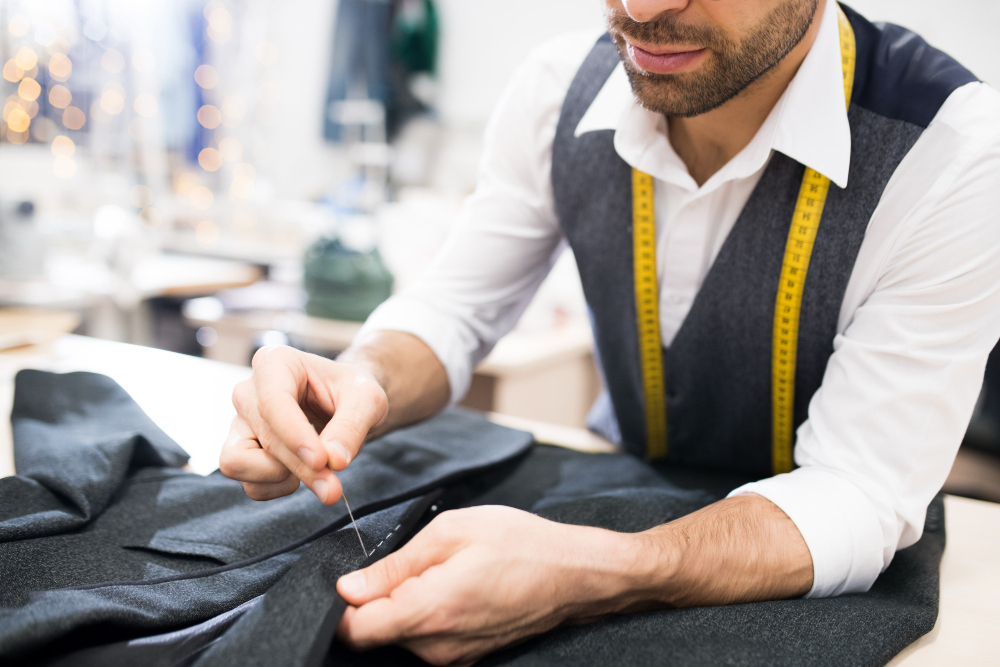
Instantly apply different colors and textures to your garment. This gives you a clear idea of how the final product will look before making any physical samples. It’s also easier to compare different options side by side.
You can even test how colors and textures react in different lighting. This provides a more accurate representation of how the garment will look in real-world conditions.
Learn more: Decode dressing trends and how to apply them to your designs
Quick changes
With digital design, changes are quick and easy. If you want to adjust a part of the garment, it’s as simple as clicking a button. This saves a lot of time compared to traditional methods.
It’s also easy to make multiple changes at once and test them. If something doesn’t look right, you can fix it on the spot and see the results right away.
Easier communication with the team
You can share files and designs anytime, making it simple to collaborate. Everyone involved can view the same design, making feedback faster and more efficient.
It also allows for clearer instructions. Instead of relying on sketches or verbal descriptions, you can send detailed digital designs that everyone can understand.
Collaborative creation
Designers, pattern makers, and other team members can work together, making the process more dynamic and inclusive.
With digital platforms, everyone can contribute their ideas and skills to the project. This leads to better results, as it’s possible to combine different perspectives and expertise.
Learn more: Why does fashion innovation drive the market? 7 trends to consider
How does digital tailored clothing help you sell more?
Digital tailored clothing helps you sell more by providing a better fit and higher-quality designs. When customers receive a garment that fits them perfectly, they are more likely to return for more purchases.
Meanwhile, tailored clothing designed digitally ensures precise measurements and reduces errors, which results in happier customers.
By using digital tools, you can create more personalized designs for your customers in less time. It allows you to offer a wider range of styles and fits that appeal to different body types.
Personalized products are often seen as more valuable, leading to higher sales and customer loyalty.
Design profitable collections with Audaces solutions
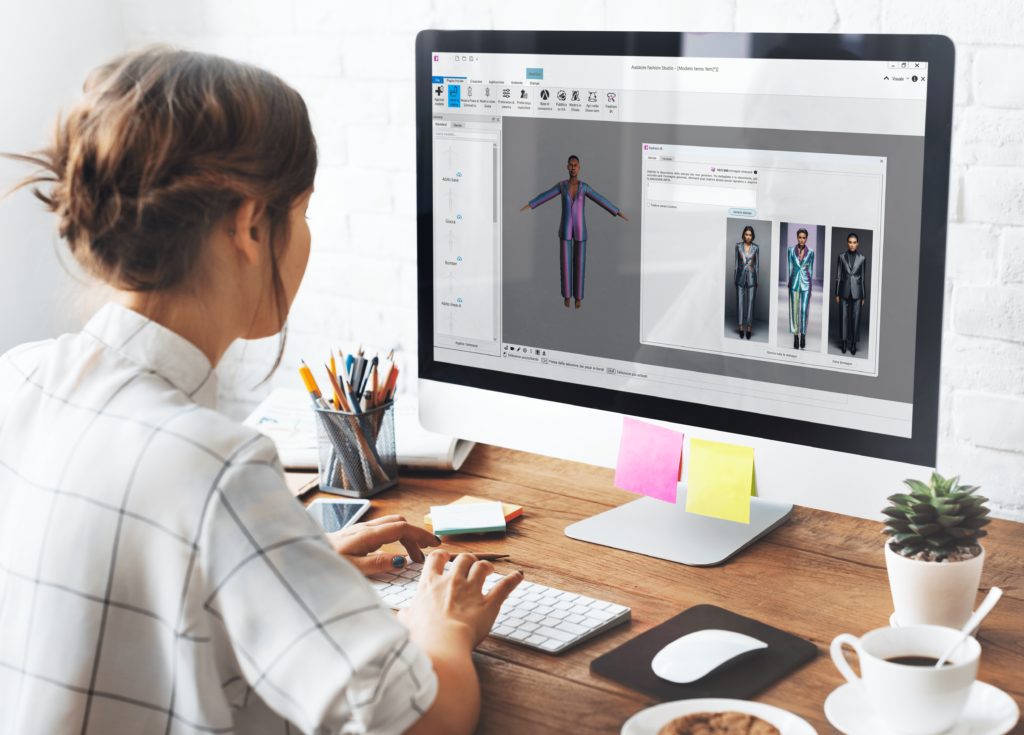
Audaces Fashion Studio
Audaces Fashion Studio is a groundbreaking innovation for fashion designers within Audaces360 multisolution.
This innovative technology empowers professionals to create smarter sketches on a 3D mannequin. It provides tools and functionalities to enhance your design process.
Its features enable you to examine fit, drape, and movement in different body types. Explore fabrics, colors, textures, and apply prints in a few clicks.
Audaces Idea
Audaces Idea is your solution for creating and applying prints to your designs.
It helps end errors and streamline communication between design and the other teams. This way, you can reduce the development cycle and ensure timely deliveries.
Audaces Idea also includes integrated tech packs and automatic pre-cost calculations. You can visualize all your creation’s information on a single screen during the process.
Automating technical tasks frees up your time for more design exploration!
Audaces Sofia
Meet Audaces Sofia our cutting-edge fashion Artificial Intelligence. It helps you enhance your creations with an unlimited source of inspiration.
This solution has the power to transform concepts into reality in a matter of minutes. Some simple prompts are all you need to generate print variations.
Audaces Sofia integrates with Audaces Idea and Audaces Fashion Studio. This combination provides you with the complete solution to create effortlessly
Discover Audaces360 and unlock a world of possibilities for fashion design and production. Explore our comprehensive suite of solutions today!
FAQ
Tailored clothes are garments made to fit someone perfectly. Unlike ready-to-wear clothes, which are mass-produced in standard sizes, tailored clothes are custom-made to suit the person’s body shape.
Choose the right software, define colors and materials, create the initial design, and simulate the garments in 3D.
More precision in design, testing colors and textures, quick changes, and easier communication with the team.


